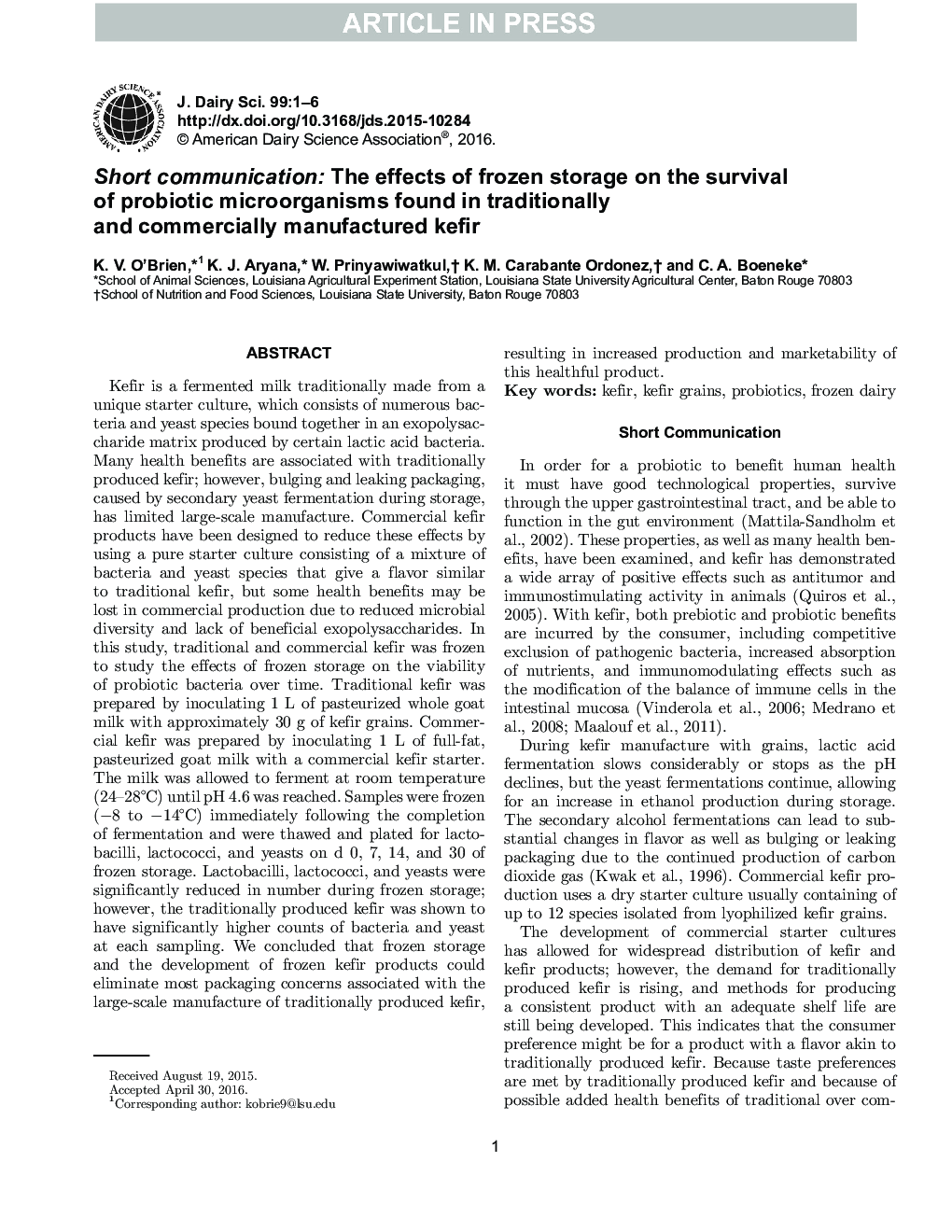| کد مقاله | کد نشریه | سال انتشار | مقاله انگلیسی | نسخه تمام متن |
|---|---|---|---|---|
| 5542816 | 1402523 | 2016 | 6 صفحه PDF | دانلود رایگان |
عنوان انگلیسی مقاله ISI
Short communication: The effects of frozen storage on the survival of probiotic microorganisms found in traditionally and commercially manufactured kefir
ترجمه فارسی عنوان
ارتباط کوتاه: اثر ذخیره سازی یخ زده بر بقای میکروارگانیسم های پروبیوتیک یافت شده در کبد سنتی و تجاری
دانلود مقاله + سفارش ترجمه
دانلود مقاله ISI انگلیسی
رایگان برای ایرانیان
کلمات کلیدی
کبد، غلات کافر، پروبیوتیک ها، لبنیات منجمد،
موضوعات مرتبط
علوم زیستی و بیوفناوری
علوم کشاورزی و بیولوژیک
علوم دامی و جانورشناسی
چکیده انگلیسی
Kefir is a fermented milk traditionally made from a unique starter culture, which consists of numerous bacteria and yeast species bound together in an exopolysaccharide matrix produced by certain lactic acid bacteria. Many health benefits are associated with traditionally produced kefir; however, bulging and leaking packaging, caused by secondary yeast fermentation during storage, has limited large-scale manufacture. Commercial kefir products have been designed to reduce these effects by using a pure starter culture consisting of a mixture of bacteria and yeast species that give a flavor similar to traditional kefir, but some health benefits may be lost in commercial production due to reduced microbial diversity and lack of beneficial exopolysaccharides. In this study, traditional and commercial kefir was frozen to study the effects of frozen storage on the viability of probiotic bacteria over time. Traditional kefir was prepared by inoculating 1 L of pasteurized whole goat milk with approximately 30 g of kefir grains. Commercial kefir was prepared by inoculating 1 L of full-fat, pasteurized goat milk with a commercial kefir starter. The milk was allowed to ferment at room temperature (24-28°C) until pH 4.6 was reached. Samples were frozen (â8 to â14°C) immediately following the completion of fermentation and were thawed and plated for lactobacilli, lactococci, and yeasts on d 0, 7, 14, and 30 of frozen storage. Lactobacilli, lactococci, and yeasts were significantly reduced in number during frozen storage; however, the traditionally produced kefir was shown to have significantly higher counts of bacteria and yeast at each sampling. We concluded that frozen storage and the development of frozen kefir products could eliminate most packaging concerns associated with the large-scale manufacture of traditionally produced kefir, resulting in increased production and marketability of this healthful product.
ناشر
Database: Elsevier - ScienceDirect (ساینس دایرکت)
Journal: Journal of Dairy Science - Volume 99, Issue 9, September 2016, Pages 7043-7048
Journal: Journal of Dairy Science - Volume 99, Issue 9, September 2016, Pages 7043-7048
نویسندگان
K.V. O'Brien, K.J. Aryana, W. Prinyawiwatkul, K.M. Carabante Ordonez, C.A. Boeneke,
